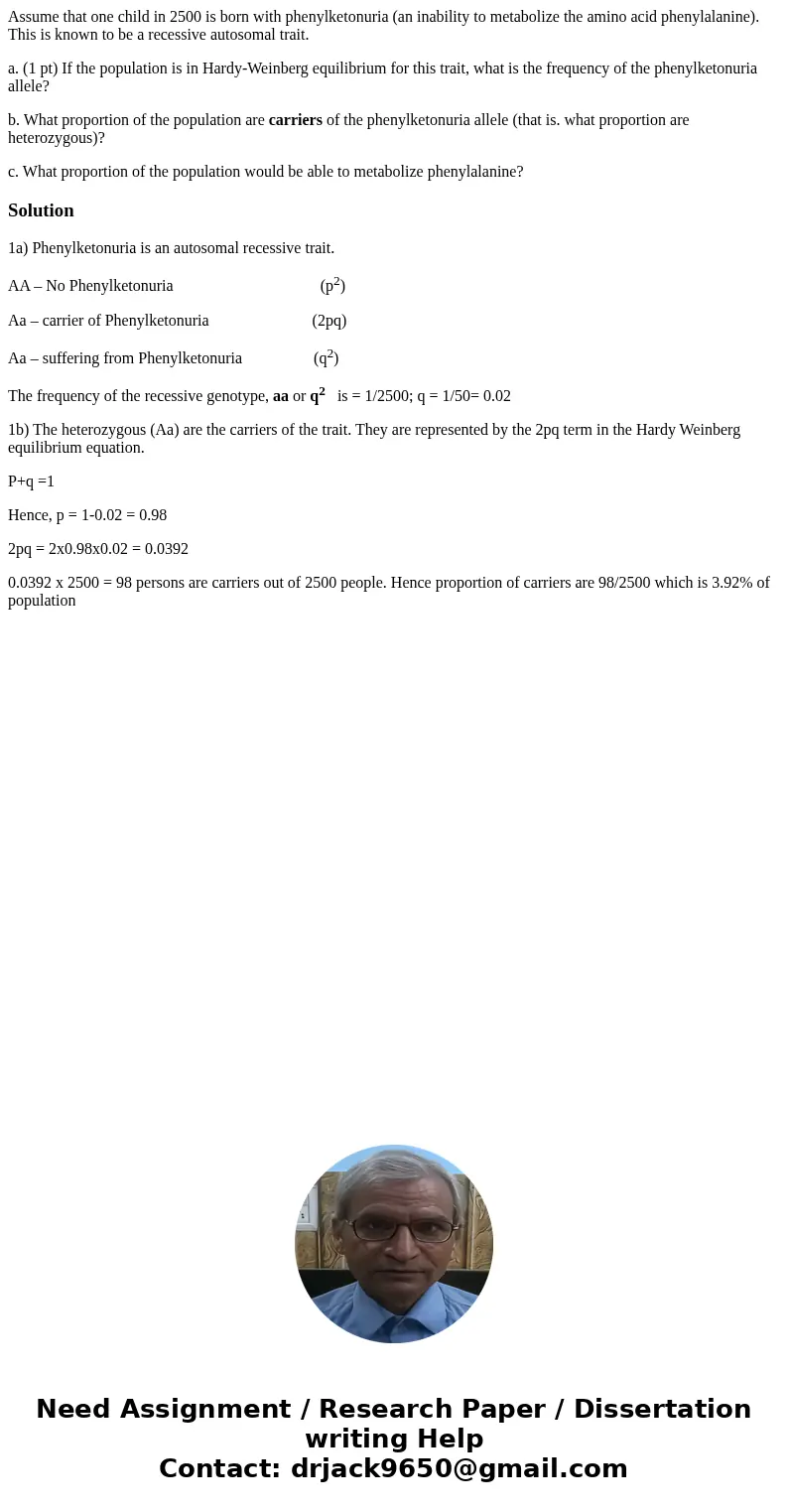Assume that one child in 2500 is born with phenylketonuria a
Assume that one child in 2500 is born with phenylketonuria (an inability to metabolize the amino acid phenylalanine). This is known to be a recessive autosomal trait.
a. (1 pt) If the population is in Hardy-Weinberg equilibrium for this trait, what is the frequency of the phenylketonuria allele?
b. What proportion of the population are carriers of the phenylketonuria allele (that is. what proportion are heterozygous)?
c. What proportion of the population would be able to metabolize phenylalanine?
Solution
1a) Phenylketonuria is an autosomal recessive trait.
AA – No Phenylketonuria (p2)
Aa – carrier of Phenylketonuria (2pq)
Aa – suffering from Phenylketonuria (q2)
The frequency of the recessive genotype, aa or q2 is = 1/2500; q = 1/50= 0.02
1b) The heterozygous (Aa) are the carriers of the trait. They are represented by the 2pq term in the Hardy Weinberg equilibrium equation.
P+q =1
Hence, p = 1-0.02 = 0.98
2pq = 2x0.98x0.02 = 0.0392
0.0392 x 2500 = 98 persons are carriers out of 2500 people. Hence proportion of carriers are 98/2500 which is 3.92% of population

 Homework Sourse
Homework Sourse